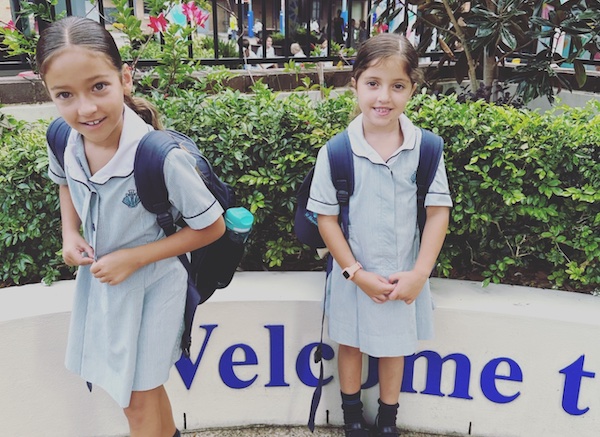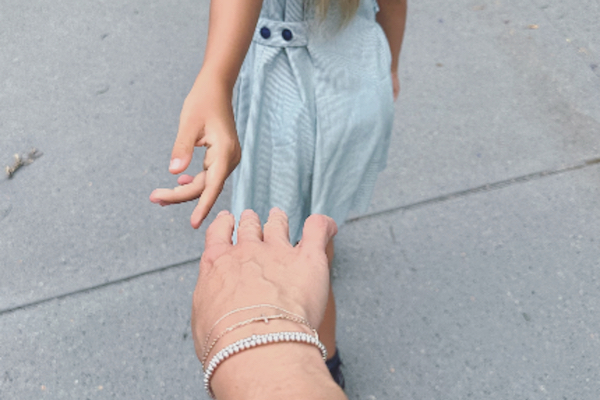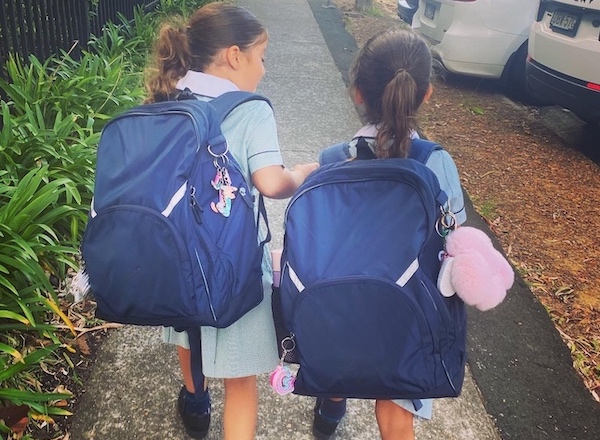Navigating the world of parenting often brings us to moments of change and transition that can be as challenging for us as they are for our children. To offer guidance and expert advice on this journey, we’ve invited Anna Kljajic, Principal Psychologist at Cloud Psychological Services, to share her insights. With her extensive experience in child psychology and as a mother herself, Anna provides valuable strategies to help ease the anxiety associated with these transitions. Here’s what she has to say…
Transitions, whether moving from preschool to kindergarten, shifting classes, or advancing from primary to high school, are inevitable and significant milestones in a child’s life. Although these changes can seem daunting, they are ripe with opportunities for personal growth and development.
As adults, we have learned to navigate new environments and situations, developing strategies for smooth transitions. This experience not only bolsters our confidence but also equips us with the tools to manage change effectively.
Children, however, often lack the experience and tools necessary for smooth transitions between different environments. Yet, it is precisely these transitions that play a crucial role in building resilience and teaching them effective coping strategies. As both a psychologist and a mother, I deeply appreciate the importance and immense value of navigating and overcoming these challenges in nurturing the development of resilient children.
As parents, one of the toughest challenges we face is walking away when our child is visibly upset. The heartache of leaving a crying child at preschool is a familiar feeling for me, marked by those intense pangs of guilt. Yet, through these experiences, I’ve realised that my children were okay as soon as I was out of sight. By handling these moments calmly, they learnt two important lessons: they are always in a safe place, and I will always return for them. I found that the more I normalised these farewells, the easier and less daunting they became for both my children and me.
With the new school year approaching, many children are preparing for transitions. So how can we equip our children with strategies and tools to help them through these transitions?
Communication
Foster a welcoming environment that encourages your child to communicate with you openly and comfortably. Seek out one-on-one time with them, as these moments can be golden opportunities for deeper conversation. Children often become more expressive during shared activities, such as a leisurely drive, a walk, or while playing a game, compared to more formal settings like sitting across a table. These relaxed interactions, including those bedtime chats when they’re playfully trying to postpone sleep, can lead to some of the most meaningful and insightful conversations. Embrace these opportunities to naturally engage in dialogue and strengthen your bond.
Pose thoughtful questions and allow ample time for your child to respond. Some suggested conversation starters include:
“How do you feel about starting school or beginning the next chapter?”
“What aspects of this new experience are you most looking forward to?”
“Are there any concerns or worries you have about this change? Let’s talk about them and think about how we can work through them together.”
Role-Modelling
Our children look to us to inform the way they approach new situations. Set them up for success by demonstrating a calm and positive attitude whilst transitioning.
Social Connections
If there are children your child knows who will be attending the same school, try to arrange for them to meet before the term starts. Coordinating a meeting at the front gate on the first day can also be a great way to ease any social anxiety.
Skills Development
Seek out ways for your child to learn and practise emotion-regulation strategies before school starts. Techniques like ‘box breathing’ or grounding exercises, which involve noticing what they can see, hear, touch, taste, and smell, are effective for anchoring them in the present moment.
Promoting Familiarity Through Exposure
To ease the uncertainties associated with transitions, aim to simulate expected experiences as closely as possible. Participate in orientation days or related activities before the school term begins. Consider doing a few ‘dry runs’ where you prepare as if it’s a school day and drive by or to the new school. This can be especially beneficial for pre-school aged children, who might also gain from joining a School Readiness Program.

Encouraging Positive Thinking
Train the brain to ‘see the good’ by writing down all of the things they are looking forward to when they start the new chapter, with prompts like ‘This is going to be great because…’ or ‘I can’t wait to…’. Encourage them to engage in positive self-talk, such as “This is going to be fun!”, “You’ll make new friends!”, and “You’re really growing up!”. Reinforce this with comforting reminders: “I’ll be here at 3 pm to pick you up”, or “We’ll talk about your day when you’re home at x O’Clock”.
Limit Added Anxiety
Think about other factors that may contribute to stress and anxiety. A relaxed and well-planned morning routine can significantly lessen anxious feelings. Ensure there’s ample time each morning to provide a peaceful and unhurried start to the day, as we all know the added stress that comes with rushing!
Seek Professional Support
Consider enrolling your child in Anxiety Management workshops or scheduling appointments with a Psychologist. These sessions provide a secure space for your child to acquire coping skills and connect with peers facing similar experiences. Regular meetings leading up to the school start can also reinforce these strategies, ensuring they are readily accessible during the transition.
It’s important to remember that it’s never too late to acquire skills that aid in managing transitions. Our brains have a remarkable capacity for adaptability. The secret lies in consistent practise – the more we rehearse these skills, the better prepared we are to utilise them effectively in real-time situations.

